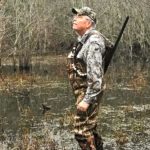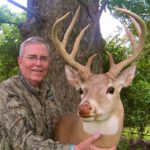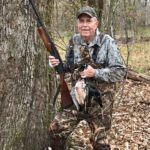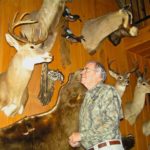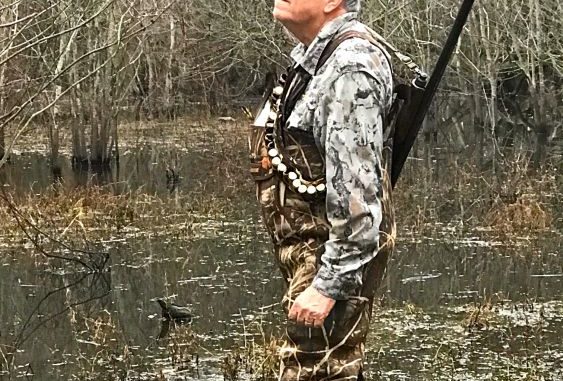
The former head of the Louisiana Department of Wildlife and Fisheries shares a few hunting tips, discusses his family’s impact on North Louisiana hunters and reflects on his tenure overseeing the LDWF.
Robert Barham could probably get an invitation to hunt or fish just about anywhere in Louisiana, but his ideal destination would probably be the woods and waters of Morehouse Parish around his small hometown of Oak Ridge.
With a population in the neighborhood of 140 people, Oak Ridge sits at the intersection of Coulee Swamp, South Oak, Cypress and Cotton roads. There are zero red lights there, but two stop signs.
“Any chance I do get for some time off, I generally head back to Oak Ridge,” he said. “I enjoy being home and spending time on the land where I grew up.”
A former state senator, he spent most of the last 10 years as secretary of the Louisiana Department of Wildlife and Fisheries and now serves as assistant secretary of State Parks for the state’s Department of Culture, Recreation and Tourism.
After the high-paced political life in the State Capitol in Baton Rouge, you can probably see why Oak Ridge is so appealing for Barham, 68.
“I’ve been exposed to the greatest outdoor resources in the world,” he says. “But I get just as much pleasure hunting right around there or fishing on the Bonne Idee (a small oxbow not far from his home) as anywhere.
“Today I hunt and fish for peace and quiet as much as anything.”
In fact, that leads to what Barham says is the best advice he can offer people in the outdoors.
“I’ve killed some great deer, caught some huge fish and had the opportunity to see a lot of things,” he said. “But don’t be so caught up in hunting a Boone and Crockett deer or a record redfish. Relish being outdoors. What you see and what you do is a memory in itself.”
A simple approach to hunting
It is still the whitetail deer that gets him most excited — and his experience offers some great insights for hunters.
“First and foremost, I do everything to take away my scent,” he said. “If there is anything I’ve got to share that’s important, it’s that. I know deer can smell you much quicker than they can see you. I’m a believer in having scent to cover yours or some sort of attractant. My personal feeling is covering one’s own scent is twice as important as something that will draw deer to you. When they smell you, they vacate the premises. And that sends any other deer close to you on a quick trip somewhere else.”
Deer hunting is really just common sense when you learn about your prey.
“I pick a good looking area and scout the woods looking for deer trails and sign. I’m looking for places the does are using. We don’t feed deer in the wintertime,” Barham said. “We have gone away from that because that gets them gathered up and increases the chance of disease. We do have food plots, but not bait or other food. Hunting the edge of food plots is a great place. Where the girls are, the boys are coming that way, too.
“I also hang around thicker places I find. Trails through thickets are the most used, especially in daytime, and the deer are a little less cautious when they think they are hidden. You aren’t going to see a lot of really good bucks wandering around in the open except during the rut — and they won’t be staying in the open long then.”
As you would expect, Barham is a staunch advocate of deer management plans. If your hunting club, family or property owners are willing to actively manage deer herds, that dramatically increases your chances of taking a big buck. His personal practices mirror the best recommendations of deer experts everywhere.
“Unless you are a kid that has never killed a deer, we don’t shoot bucks unless they are 15 inches across the inside of the rack,” he says. “And we limit taking a big deer to one a year per hunter. We also fill our doe tags because if you don’t harvest your does and manage them, the bucks suffer.”
His simple approach to hunting carries over to his gear. He shoots an old Model 70 Winchester .270 that his dad gave him, normally with130-grain bullets.
Barham takes the same, simple approach to duck hunting. But he doesn’t just rely on his own knowledge.
“Listen to people with a lot of expertise,” he recommended. “Learn how others do it and spend some time trying that. You can always learn. I like to hunt ducks in the pinoak flats. We’ve got rice fields and pit blinds, too, but for some reason, it’s just so much more exciting to see them come through the timber or flooded backwater to the decoys.”
One tip he has is to avoid spinning wing decoys in the woods. He does like vibrating decoys that keep a little ripple on the water, and only puts out a dozen or so traditional dekes. If the call gets their attention, they’ll find the hole and those decoys, he said.
His favorite duck gun is simple, too. An old wood stock Remington .870 that “cost $189 a decade or so ago at Simmons’ at a tent sale.” Because of the brush in the woods, he shoots heavy No. 2 or 4 loads for ducks.
Barham’s hunting experiences around the world are noteworthy. He has an entire trophy wall in his home in Oak Ridge of the various animals and other treasures he has picked up hunting throughout his life. He hesitates to show it to people because he says, “It isn’t here to show off. It’s here to remind me of the wonderful adventures I’ve had outdoors.”
